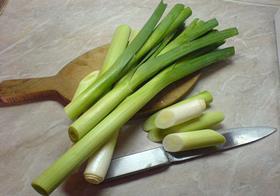
Japan is the largest importer of leeks in Asia, but if you were a consumer there you wouldn’t know it, and over the last few years it’s become harder and harder to find out.
In 2006, Japan imported more than 71,000 tonnes of the vegetable, but in 2009 that figure had dropped to under 33,000 tonnes. The reason for that decline is easy to find – imports from China make up almost the entirety of that volume, and have more than halved over that time period.
“I understand that the drastic drop in import volume was due to the chemical residue problem,” explained Junichi Moriya, president of major Japanese importer Tokyo Seika Trading Co. “Consumers here in Japan still doubt the safety of Chinese products; eventually they do not want to get imported leeks at the retailers. The retailers have an obligation to mention its origin, so consumers can find the origin of products easily at retail level.”
Imports from other suppliers have not materially picked up in volume over the past few years to cover the decline from China, however. Exporters are still sending steady volumes to the market, but say the demand for leeks from nations other than China is largely stagnant.
For Australian exporters, the situation hasn’t been helped by a drop in local leek availability.
“Sales for us in Japan are static, and if anything decreasing slightly,” said Paul Schreurs, the production manager for major Australian grower Peter Schreurs & Sons Vegetable Farm.
The Schreurs family, which grows around 2,500 tonnes of leeks each year, sends 100 tonnes to the Japanese market annually via exporter Global Fruit and importer Showa Bokei, alonside a number of other exporters exporting small volumes of high-value leeks to Japan.
“Japan is after a leek which has a long, white shank with a little bit of green on the top and are generally quite thick,” detailed Australian exporter BGP’s export sales manager Patrick McGreesh.
The majority of imported leeks in Japan head straight for the food service sector, mainly restaurants and hotels, rather than ending up in supermarkets, sidestepping Japanese consumer preferences for local produce.
Japan’s own domestic leek production runs to about 510,000 tonnes annually.



